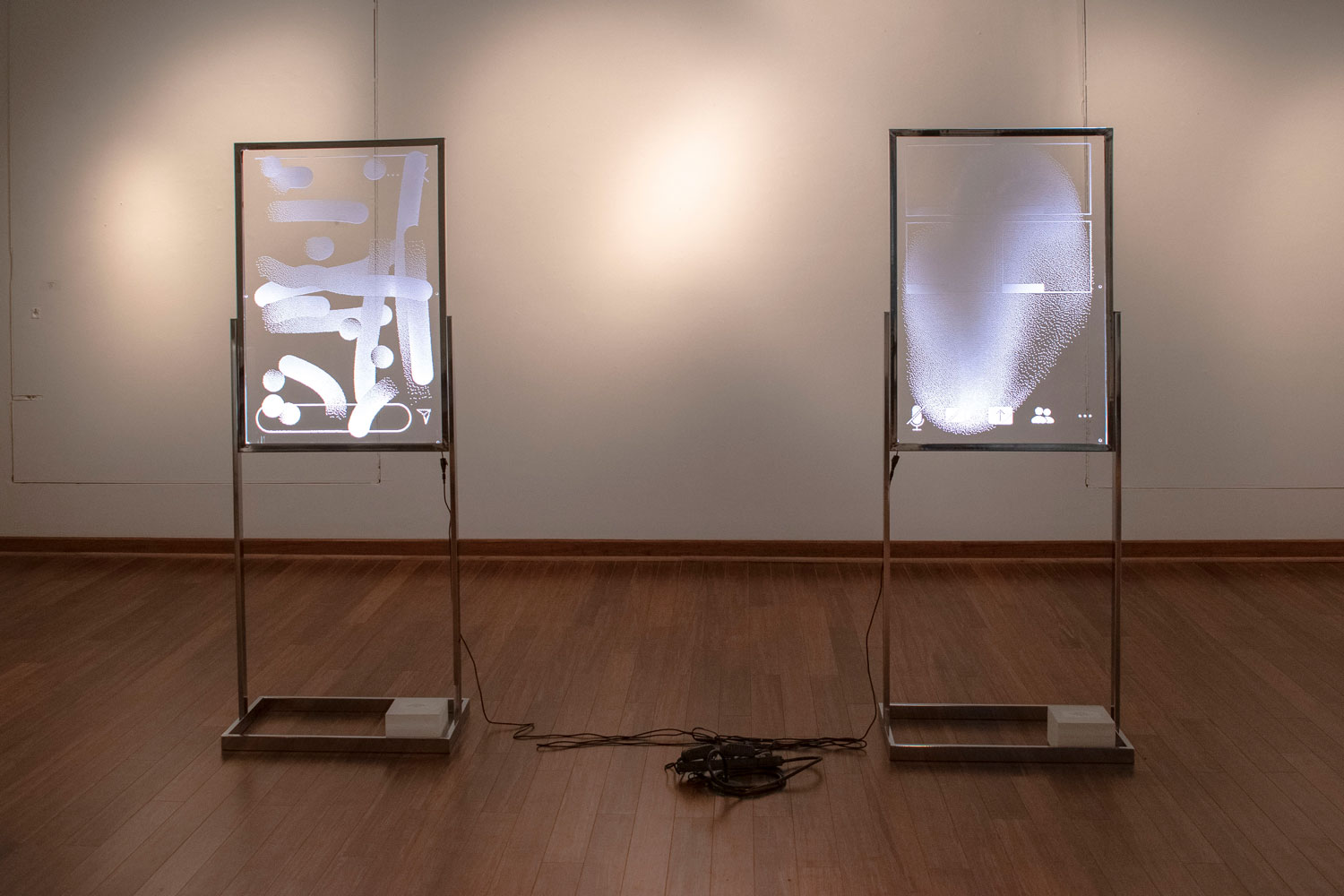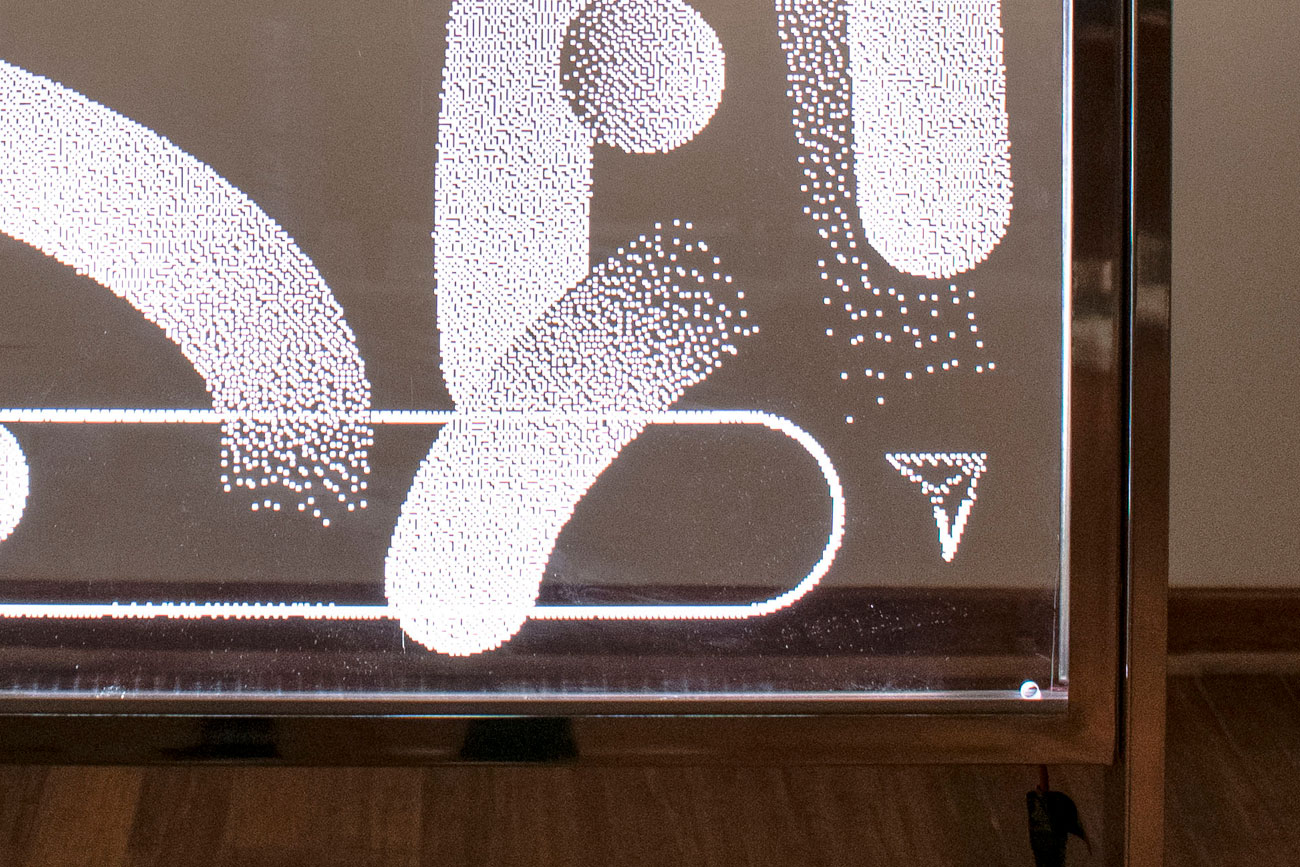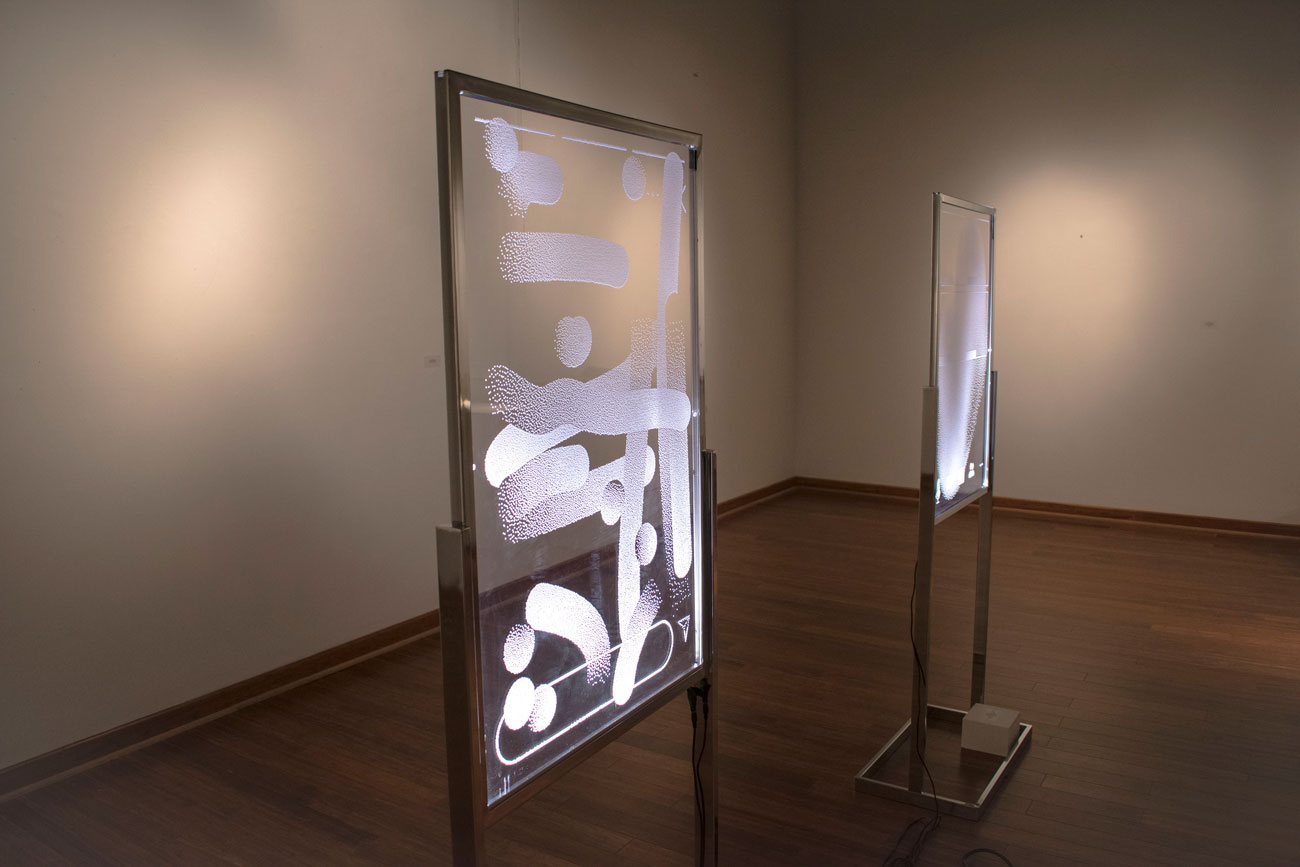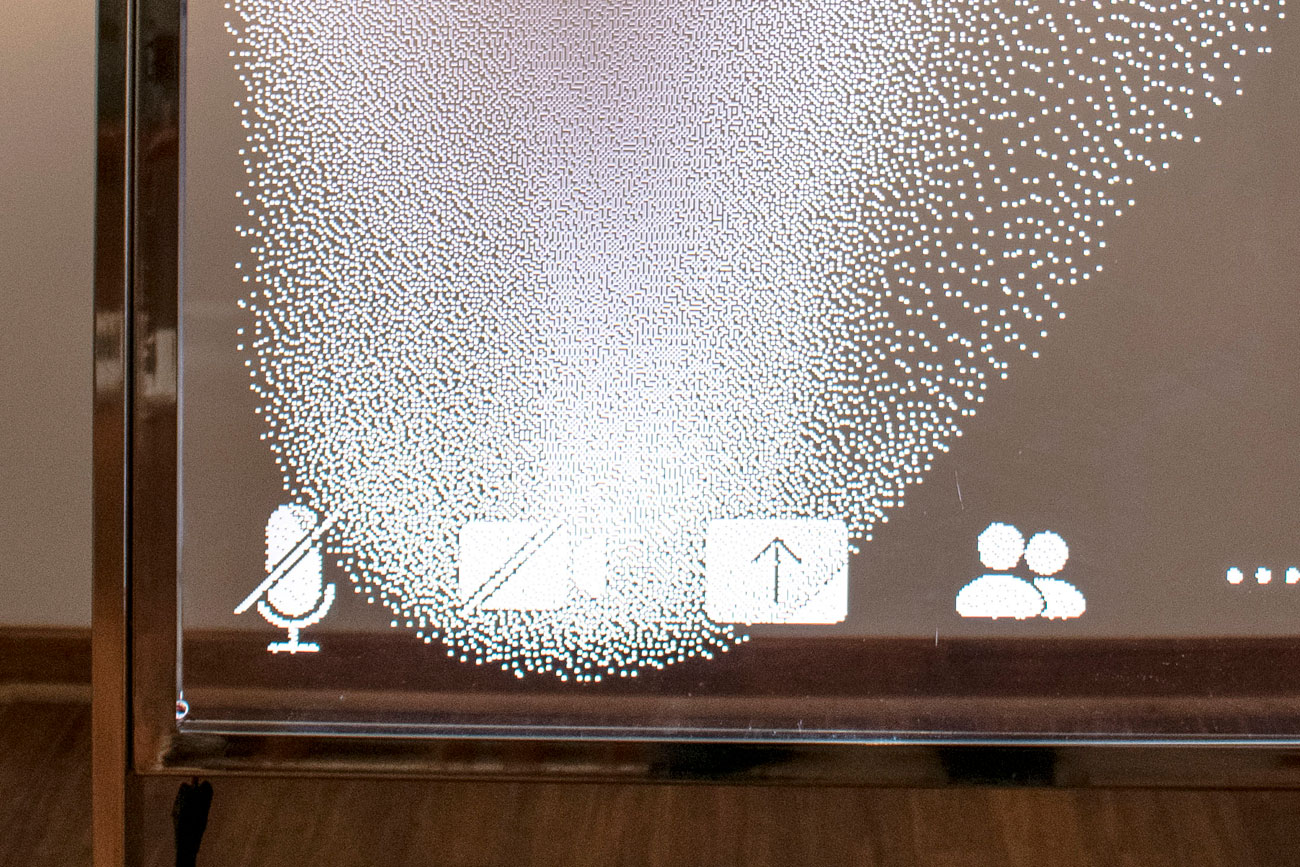
Hyperpresence: Sneeze Guard Interface 1 and 2
I am interested in digital user interfaces and responsiveness: the way that content is arranged to fit a wide range of screen dimensions. I think of responsiveness as a larger metaphor for the constant feed of media that responds and adapts in real time, not only to the dimensions of our devices, but to the impulses of our psyches. This impacts global politics, economics, and—as we are currently seeing during the pandemic—public health. The objects I am making in my current body of work recontextualize screen interfaces and introduce physical materiality.
Hyperpresence is an ongoing series of multimedia works that contend with the ways the global pandemic has accelerated the breakdown of the separation between digital interfaces and lived reality and between slick high-res and humble low-res images. The power of contemporary vernacular images is the immediacy of their making and consumption. All images—still and moving—are live now, whether they are footage of the first COVID-19 vaccinations on broadcast television, a Zoom call for work, or photos of protests on Twitter. The urgency of image capture and sharing, especially during the pandemic and recent protest movements, shows us their visceral power. Images are not set apart from reality. The screens all around us become our eyes as if we are hyper-present, everywhere all at once.
Just as vernacular images have defined our consumption of media now more than ever, they have also reinvigorated social movements. The low-res image, with its live-ness, has exceeded itself as a form of representation, beamed straight into our consciousness in real time and subsumed as lived experience. Paradoxically, we are closer than ever to these events and profoundly far away and detached at the same time.
This work accompanies my recent essay, “Smudges on the Screen, Fog on My Glasses,” in feeeels magazine, Issue 2.


